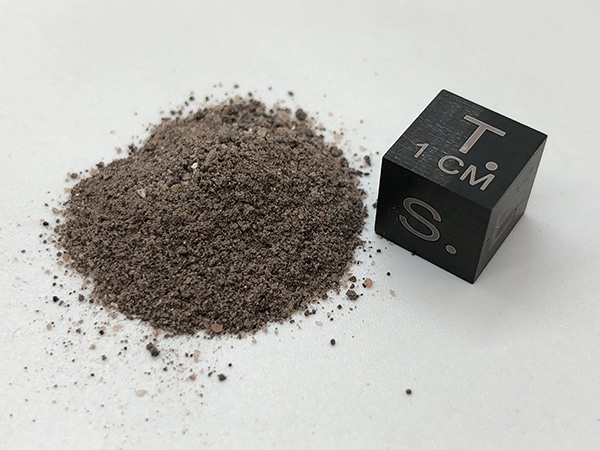Exolith Simulant: MGS-1S Sulfate ISRU
Mineralogy
| Mineral | Wt.% |
|---|---|
| Gypsum | 40.0 |
| Plagioclase | 16.4 |
| Glass-rich basalt | 13.7 |
| Pyroxene | 12.2 |
| Olivine | 8.2 |
| Mg-sulfate | 2.4 |
| Ferrihydrite | 2.1 |
| Hydrated silica | 1.8 |
| Magnetite | 1.1 |
| Anhydrite | 1.0 |
| Fe-carbonate | 0.8 |
| Hematite | 0.3 |
Simulant Name: MGS-1S Sulfate ISRU
Current Status: Available
Developed By: University of Central Florida
Publications: Cannon, K. M., D. T. Britt, T. M. Smith, R. F. Fritsche, and D. Batcheldor (2019), Mars Global Simulant MGS-1: A Rocknest-based Open Standard for Basaltic Martian Regolith Simulants. Icarus, 317, 470-478.
Current Status: Available
Developed By: University of Central Florida
Publications: Cannon, K. M., D. T. Britt, T. M. Smith, R. F. Fritsche, and D. Batcheldor (2019), Mars Global Simulant MGS-1: A Rocknest-based Open Standard for Basaltic Martian Regolith Simulants. Icarus, 317, 470-478.
UCF has ceased production of the simulant. The simulant is now offered by Space Resource Technologies, a spin-off company. You can reach Space Resources Technologies at the following email address: info@spaceresourcetech.com
MGS-1S is a modified version of the root MGS-1 simulant, and is enriched in the polyhydrated sulfate gypsum. This represents the Reference Case “B” in the NASA Mars Water In-Situ Resource Utilization Study.
MGS-1S is specifically designed for ISRU water extraction studies; the M-WIP study concluded that polyhydrated sulfate deposits represent a clear advantage over bulk regolith or clay-bearing deposits in terms of mass and power, and may be much easier to access and excavate than permafrost deposits.
Images
Photograph of an MGS-1S prototype:
